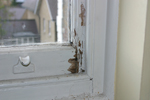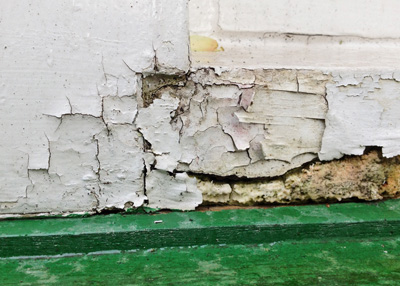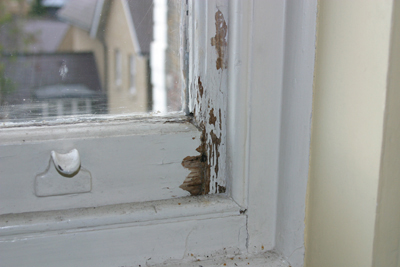MOT your period house
It's always a great time to take small steps to prevent larger problems developing with your historic house down the line


Regular maintenance of any property, regardless of its size or age is essential if you wish to avoid expensive and destructive problems later. This is especially true for older properties when retaining their structural and aesthetic integrity is so important. Maintenance can extend a building's life and reduce or remove the need for repairs.
The Society for the Protection of Ancient Buildings always promotes awareness of the straightforward, economic and achievable maintenance steps that can be taken to stave off major and costly damage to your property - and improve energy efficiency which we fully endorse.
Maintenance simply involves regular inspections to check on the condition of your building and its surroundings, enabling you to take action (such as removing leaves from gutters or unblocking a drain) or making repairs if necessary. You do not need to be an expert to carry out inspections or undertake simple repairs.
Four good reasons to undertake regular building maintenance:
* Retain your properties value, particularly when original period features are still intact * Prevention is better than cure - avoid more serious problems, such as penetrating damp, along with the costs and disruption of major repair work * Save money - repair rather than replace valuable historical features such as windows and doors * Time to plan and schedule more expensive maintenance works e.g external redecoration
ProjectBook's Maintenance Checklist
Roofs: Don't wait until a leak appears before checking your roof. Keeping it watertight is key to maintaining your property in good condition. Minor repairs when required can avoid a substantial repair bill later.
Sign up for the Country Life Newsletter
Exquisite houses, the beauty of Nature, and how to get the most from your life, straight to your inbox.
* Look for dislodged or missing tiles and slates - get them reinstated as soon as possible * Inspect lead flashings and mortar fillets around chimneys * Remove debris, leaves etc. from lead valleys and flat roofs * Check soffits and facias for signs of decay - cut out and replace rotten or damaged timber and redecorate if required. * If your roof is thatched look for any thatch decay, particularly along the ridge
Chimneys: Chimneys are important features of houses, yet often they are overlooked and poorly maintained.
* Look for vegetation growing on the stack * Inspect lead flashings and mortar fillets * Use binoculars and check for leaning, defective pointing and cracked chimney pots
Rainwater Disposal: Gutters, downpipes, hopper heads and drains need to be cleared of leaves and debris at least once a year (November is best after the leaves have fallen). Damp issues are commonly connected to blocked/ defective rainwater goods.
* Check for blockages, cracks or leaks - this is best done when there is a good downpour !! * Clear all leaves and debris regularly * Drains - make sure that grilles and mesh covers are in place and not broken. Rod drains if they become blocked.
Vegetation: Trees, self seeding shrubs, saplings and ivy can cause untold damage if left unchecked commonly causing damp, defective pointing and a myriad other problems.
* Keep trees near buildings under control (potential of overhanging branches and subsidence) * Remove ivy and cut back other vegetation growing near to or on the property.

Walls: Next to the roof, well-maintained walls are essential to maintaining your property in good condition * Check walls for defective or missing pointing * Rendered surfaces - check for cracks or loose render * Check boundary walls for signs of movement or deterioration * Look for cracks, bulges or other signs or movement

Woodwork: Original windows and doors contribute to the character of a property and its well worth making every effort to preserve them in good condition.
* Check doors, windows (especially cills) bargeboards etc. for cracked or rotten timber (you'll find a penknife is a useful tool for checking whether timber is sound or not) * Inspect the condition of the paintwork - cracked or peeling paint will enable water penetration and ultimately rot. *Check and adjust ironmongery if required
Pipework & Electrics: A leaking pipe or a rodent gnawing at your electric cables can have disastrous consequences!!
* Check wiring in lofts or concealed areas for signs of rodent attack * Check behind appliances /airing cupboards etc. for leaky pipework * Make sure all hot and cold pipes are adequately lagged * Check that all stopcocks work * Clean and test smoke alarms (replace batteries if necessary)
Carrying out Simple Repairs
As a general principle, all maintenance and repairs should be carried out on a like-for-like basis using materials and techniques that match those originally used. This will help to ensure that the old and new are compatible in terms of their performance and appearance. Using inappropriate modern materials in traditionally constructed buildings can cause more problems than they are intended to solve.
If you're unsure of the correct techniques for a specific task, get a copy of the Old House Handbook which has a broad range of information for owners of period properties and/or contact Projectbook's Technical Advice Line (08445 611646) and we will assist you. Traditional materials and tools are affordable and widely available, all of which can be sourced from our Products Directory.
Extensive Repairs
There may be occasions when you need help to maintain your property or major repair works become necessary. For owners of traditionally built properties (pre 1920's) it's essential you seek out qualified professionals who understand and regularly work on older buildings and who employ traditional building techniques and materials.
You can access a comprehensive choice of recognised Uk heritage specialists in Projectbook's Heritage Register. Additionally, if you have a company you're thinking of using that is not registered with us, contact us on 08445 611616 with their details and we'll check them out for you.
Simple maintenance will not normally require consent if your building is listed or in a conservation area. However, if more extensive repairs are necessary, you should check first with the conservation officer of your local planning authority.

This is an article from ProjectBook which provides a wide range of information for the conservation, restoration, care and repair of period and listed buildings.
James Mott is the founder of www.projectbook.co.uk Established in 2008, Projectbook provides recognition and support for the Uk's leading conservation and heritage professionals as well as putting property owners in touch with the right people and information.
Updated daily with new content, the website features the Heritage Register, a products directory, informative articles, current news, events around the UK and more. For more information, visit www.projectbook.co.uk
Country Life is unlike any other magazine: the only glossy weekly on the newsstand and the only magazine that has been guest-edited by HRH The King not once, but twice. It is a celebration of modern rural life and all its diverse joys and pleasures — that was first published in Queen Victoria's Diamond Jubilee year. Our eclectic mixture of witty and informative content — from the most up-to-date property news and commentary and a coveted glimpse inside some of the UK's best houses and gardens, to gardening, the arts and interior design, written by experts in their field — still cannot be found in print or online, anywhere else.
-
 About time: The fastest and slowest moving housing markets revealed
About time: The fastest and slowest moving housing markets revealedNew research by Zoopla has shown where it's easy to sell and where it will take quite a while to find a buyer.
By Annabel Dixon Published
-
 Betty is the first dog to scale all of Scotland’s hundreds of mountains and hills
Betty is the first dog to scale all of Scotland’s hundreds of mountains and hillsFewer than 100 people have ever completed Betty's ‘full house’ of Scottish summits — and she was fuelled by more than 800 hard boiled eggs.
By Annunciata Elwes Published
